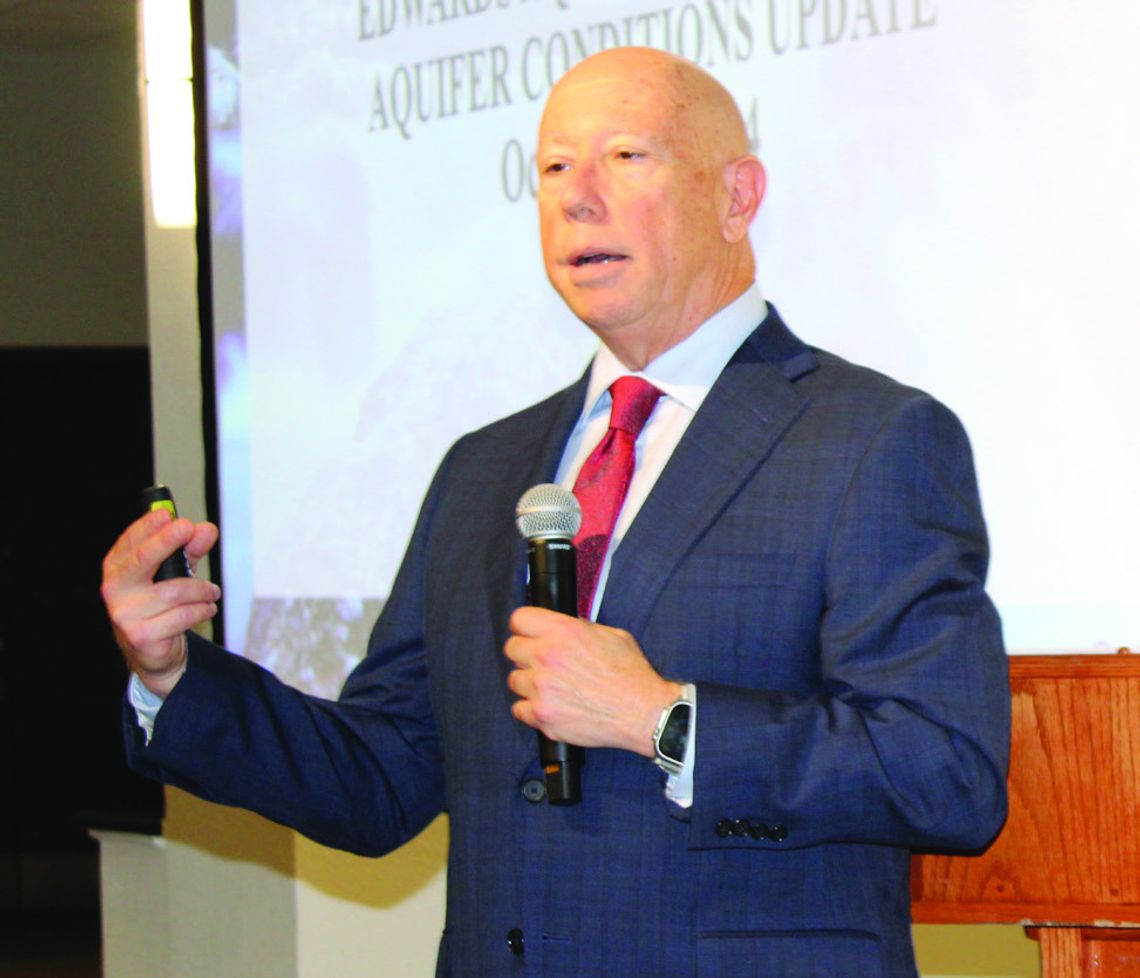EDWARDS AQUIFER AUTHORITY
With the city of San Marcos currently in stage 3 drought restrictions and local springs drying up, water conservation is at the top of mind for many. The Edwards Aquifer Authority hosted the EAA summit in San Antonio to update the public on the current state of the aquifer, which is utilized by Uvalde, San Antonio, New Braunfels and San Marcos, and the ways in which it is being managed.
“I call it the three ‘I words’ of inclusion, imagination and innovation. Those three I words fuel the mission,” EAA General Manger Roland Ruiz said. “Our mission has not changed from the beginning: manage, enhance and protect. What has changed has been the vigor and the way that we are pursuing that mission.”
Ruiz said inclusion involves the EAA opening itself up to more engagement with all of those regulated by the agency and partnering with those that are impacted by its work in some way. Imagination involves creatively working with other agencies and those regulated by the EAA to address the challenges of population growth, recurring drought and unpredictable climate. Innovation involves identifying solutions to better manage all water resources, not just those regulated by the EAA.
Paul Bertetti, EAA Aquifer Science Research and Modeling senior director, said the water levels in the Edwards Aqui- fer are the lowest they’ve ever been and will likely not refill until next Spring or later.
“The current drought has significantly lower water levels than we’ve experienced for droughts of these magnitudes over the history of the aquifer system. Why is that? Well, we’ve got significantly less rainfall,” Bertetti said. “We’re looking forward to changes in the system, but for right now, we have to expect we’re going to have these drought conditions that are likely to continue through the beginning of the year. And unless we get a significant storm event — a tropical system, rainfall, [any of ] those things that we call major floods — It’s unlikely that we’re going to be able to refill the tank maybe until next spring or thereafter.”
Ruiz said water utilities are struggling with ways to meet the demand of the future, particularly since the Edwards Aquifer is a finite resource.
“Historically the Edwards will replenish itself when it does have rain as Paul [Bertetti] alluded to, but absent that the capacity is a known quantity,” Ruiz said. “We have a regulatory program that has helped us manage two droughts in recent history, but the allocation of water rights to this aquifer is not going to change. They’re going to increase, so we’re managing within that limitation.”
Marc Friberg, EAA External and Regulatory Affairs executive director, said curtailment, or decreases in the amount able to be drawn by a permit holder, is the typical response to drought conditions, and it works.
“As conditions get worse, a permit holder is allowed to pump less water. It’s a harsh regulation, and essentially, we are dropping that responsibility into the lap of the permit holder,” Friberg said. “We have no incentive to help you cut back. … But throughout all of implementation, even in the 2011-2014 drought, we got into severe restrictions. We got into severe restrictions last year. It has worked. People have been able to live within their permits. People have been able to find ways to make adjustments and come through for the good of the region and for the good of their constituents and to stay within the legal realm of the EAA regulatory scheme. … If we go to stage five next week, we don’t have a special lever in the back of our office where you’re not capable of pumping; you’re going to have to do something. You’re going to have to plan.”
Watch the full EAA Summit at this link youtube. com/watch?v=5btmxQftEtg.









